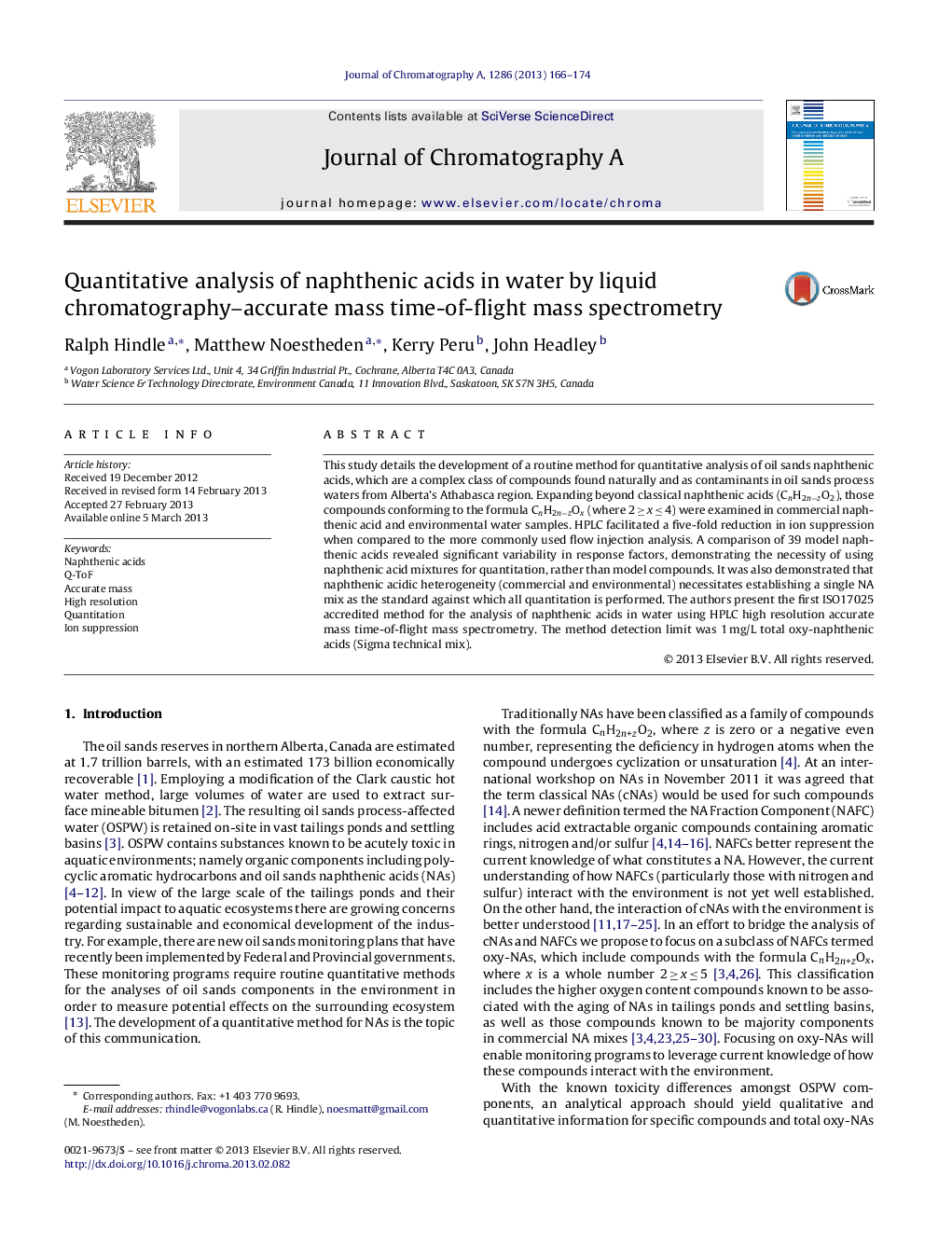| Article ID | Journal | Published Year | Pages | File Type |
|---|---|---|---|---|
| 1204146 | Journal of Chromatography A | 2013 | 9 Pages |
This study details the development of a routine method for quantitative analysis of oil sands naphthenic acids, which are a complex class of compounds found naturally and as contaminants in oil sands process waters from Alberta's Athabasca region. Expanding beyond classical naphthenic acids (CnH2n−zO2), those compounds conforming to the formula CnH2n−zOx (where 2 ≥ x ≤ 4) were examined in commercial naphthenic acid and environmental water samples. HPLC facilitated a five-fold reduction in ion suppression when compared to the more commonly used flow injection analysis. A comparison of 39 model naphthenic acids revealed significant variability in response factors, demonstrating the necessity of using naphthenic acid mixtures for quantitation, rather than model compounds. It was also demonstrated that naphthenic acidic heterogeneity (commercial and environmental) necessitates establishing a single NA mix as the standard against which all quantitation is performed. The authors present the first ISO17025 accredited method for the analysis of naphthenic acids in water using HPLC high resolution accurate mass time-of-flight mass spectrometry. The method detection limit was 1 mg/L total oxy-naphthenic acids (Sigma technical mix).
► NA analysis necessitates both high mass resolution and high mass accuracy. ► Chromatography mitigates ion suppression of OSPW extracts. ► NA model compounds demonstrate significant response factor variability. ► Future methods should use an industry standard NA calibration mix. ► The first accredited method for NAs in water using LC-Q-ToF is presented.
